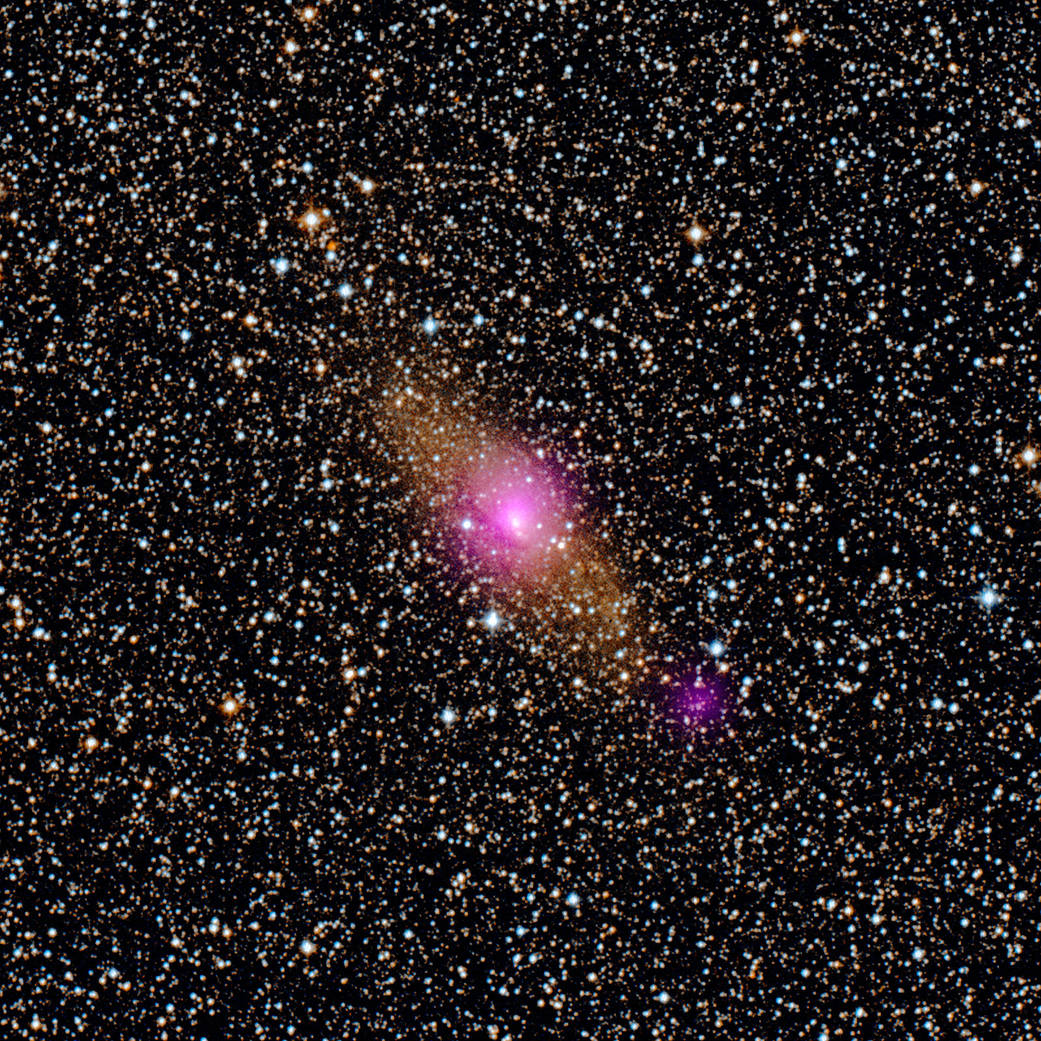
The magenta spots in this image show two black holes in the Circinus galaxy: the supermassive black hole at its heart, and a smaller one closer to the edge that belongs to a class called ultraluminous X-ray sources, or ULXs. The magenta X-ray data come from NASA’s Nuclear Spectroscopic Telescopic Array, and are overlaid on a visible/infrared image from the Digitized Sky Survey.
ULXs consist of black holes actively accreting, or feeding, off material drawn in from a partner star. Astronomers are trying to figure out why ULXs shine so brightly with X-rays.
The ULX was spotted serendipitously by NuSTAR, which sees high-energy X-ray light. Further observations with other telescopes, combined with NuSTAR’s data, revealed that the black hole is about 100 times the mass of our sun.
The Circinus galaxy is located 13 million light-years from Earth in the Circinus constellation.
Image credit: NASA/JPL-Caltech





























